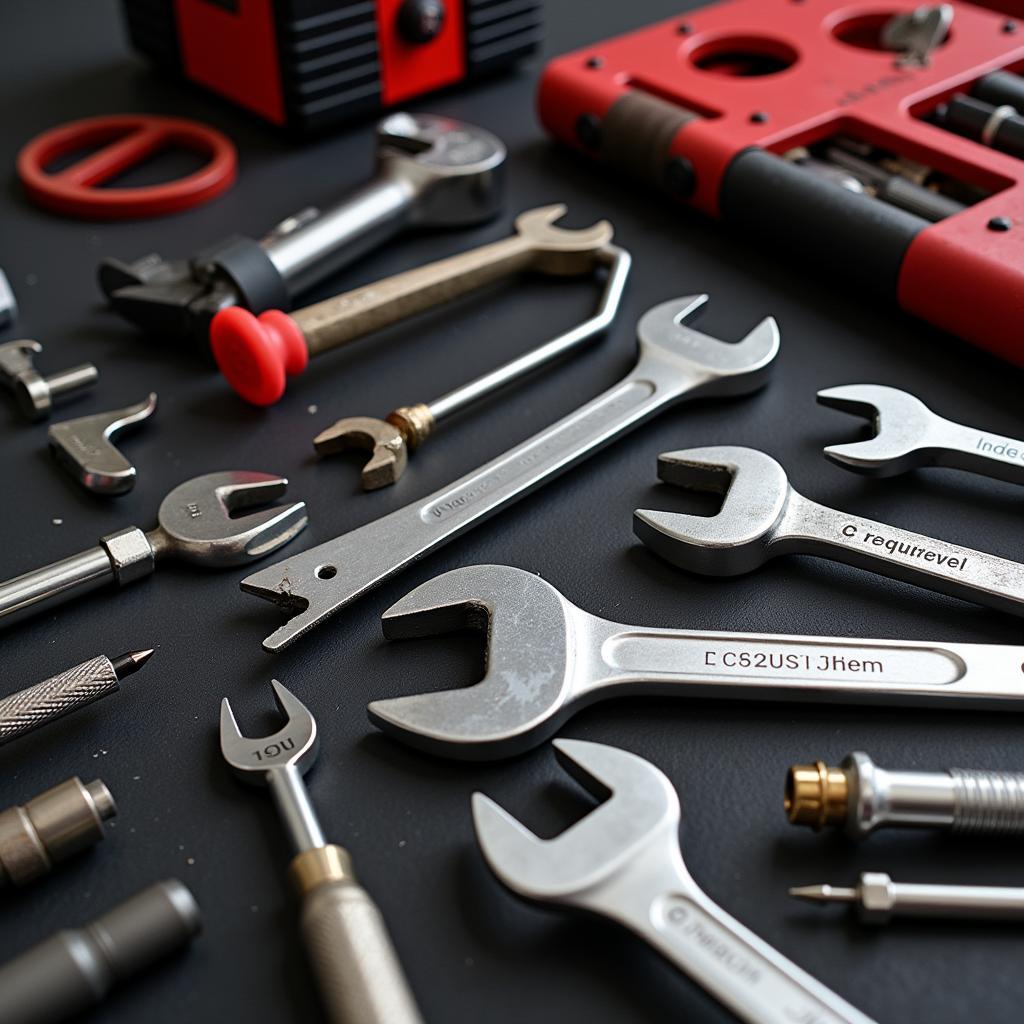When your car throws a code, it’s like it’s speaking a foreign language. But don’t worry, understanding these codes is crucial for effective car maintenance and repair. We’ll explore the world of car codes, helping you decipher their meaning and take the right action.
What are Car Codes and Why Do They Appear?
Car codes are diagnostic trouble codes (DTCs) that indicate a malfunction within your vehicle’s system. Your car’s computer uses these codes to communicate specific problems with your engine, transmission, or other essential components. The codes are stored in the car’s on-board diagnostic system (OBD) and can be accessed using an OBD II scanner.
Common Types of Car Codes
There are two main categories of car codes:
- Generic Codes: These are standardized codes recognized across different car makes and models. They provide general information about the problem, like “Oxygen sensor malfunction” or “Catalytic converter malfunction.”
- Manufacturer-Specific Codes: These codes are unique to specific car manufacturers. They offer more detailed information about the problem, often pointing to a specific component or sensor within a particular vehicle.
How to Read and Understand Car Codes
Understanding car codes requires knowledge of the different code categories and their corresponding meanings.
Understanding Code Structure
Car codes usually consist of a series of letters and numbers.
- First Character: Indicates the type of code (P, B, C, or U)
- P: Powertrain (Engine, Transmission, etc.)
- B: Body (Body Control Module, etc.)
- C: Chassis (ABS, Traction Control, etc.)
- U: Network (Communication Issues)
- Second Character: Represents the code’s category (0-9)
- 0-9: Refers to the code’s specific category
- Third and Fourth Characters: Provide further information about the code (00-99)
- Fifth Character: Specifies the sub-category of the code (0-9)
Using an OBD II Scanner
To read car codes, you’ll need an OBD II scanner, which can be purchased online or at most auto parts stores. Once connected to your vehicle’s diagnostic port, the scanner will display the stored codes.
 OBD II Scanner Connected to Car’s Diagnostic Port
OBD II Scanner Connected to Car’s Diagnostic Port
Common Car Codes and Their Meanings
Let’s delve into some common car codes you might encounter:
- P0171: System too lean (Bank 1) – This code indicates that the engine is running too lean, meaning there’s not enough fuel being injected into the engine. Potential causes include a faulty oxygen sensor, fuel pressure regulator, or fuel injector.
- P0300: Random/Multiple Cylinder Misfire Detected – This code suggests that the engine is experiencing misfires in one or more cylinders. Causes can include a faulty spark plug, ignition coil, or fuel injector.
- P0420: Catalyst System Efficiency Below Threshold (Bank 1) – This code indicates that the catalytic converter is not functioning correctly. Potential causes include a faulty oxygen sensor, clogged catalytic converter, or a problem with the exhaust system.
- B1234: Body Control Module Error – This code indicates a problem with the body control module, which manages various functions in your car, including lights, door locks, and power windows.
- C1234: Chassis Control Module Error – This code indicates a problem with the chassis control module, which manages braking, traction control, and other safety features.
Deciphering Car Codes with Expert Guidance
“Don’t let car codes intimidate you,” says John Smith, a certified automotive technician with over 20 years of experience. “Understanding the basics of code reading is a good starting point, but for accurate diagnosis and repair, it’s essential to consult with a qualified mechanic.”
Helpful Tips for Diagnosing Car Codes
- Gather Information: Before consulting a mechanic, note the symptoms you’re experiencing, including the car’s mileage, any recent repairs, and the conditions under which the code appeared.
- Search for Code Information Online: Numerous online resources offer free car code lookups, providing explanations of common codes and potential causes.
- Use a Reputable Mechanic: Choose a mechanic with experience in diagnosing and repairing codes, as they can properly interpret the codes and provide the best solution.
Troubleshooting Car Codes: A Step-by-Step Guide
- Obtain the codes: Use an OBD II scanner to retrieve the stored codes from your car’s computer.
- Research the codes: Look up the codes online or consult a repair manual to understand their meaning and potential causes.
- Inspect potential areas: Based on the code information, visually inspect the related components for any signs of damage, wear, or leaks.
- Perform basic tests: If necessary, conduct simple tests to verify the functionality of the suspected components.
- Consult a mechanic: If you’re unable to diagnose the issue yourself, seek help from a qualified automotive technician.
 Mechanic Inspecting Car Engine
Mechanic Inspecting Car Engine
FAQ
-
Q: What do I do if I get a car code?
-
A: First, obtain the code using an OBD II scanner. Research the code and inspect related components. If you can’t fix the problem yourself, consult a mechanic.
-
Q: Are all car codes serious?
-
A: No. Some codes may indicate minor issues, while others signal major problems. The severity depends on the code and its corresponding symptoms.
-
Q: Can I clear car codes myself?
-
A: Yes, you can clear codes using an OBD II scanner, but it’s important to understand that clearing the code doesn’t fix the underlying problem.
-
Q: Can I ignore car codes?
-
A: It’s generally not recommended to ignore car codes, as they can indicate underlying issues that may worsen over time.
-
Q: What is the best way to prevent car codes from appearing?
-
A: Regular car maintenance, including oil changes, filter replacements, and inspections, can help minimize the likelihood of car codes.
Contact Autotippro for Expert Car Code Diagnosis
If you need assistance understanding or resolving car codes, contact AutoTipPro for expert help.
Phone: +1 (641) 206-8880
Office: 500 N St Mary’s St, San Antonio, TX 78205, United States
Don’t let car codes leave you stranded. With a little knowledge and the right tools, you can decipher their meaning and ensure your car runs smoothly.






Leave a Reply